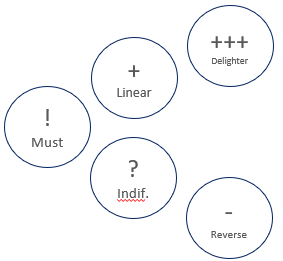Organizations generally realize that they must manage Customer Experience to create meaningful customer value. Yet too often organizations align the Product Manager role solely with product development efforts, trapping those who occupy the role in a too-narrow, “build-it and they will come” mindset. In the process, critical aspects of how value is created for customers are missed as Product Managers furiously work to develop and launch products. But value delivered, in the eyes of the customer, encompasses every aspect of the customer journey- from first awareness through satisfied testimonial.
Customers don’t buy products- they buy the total experience of a solution.
A bit of history here is informative. The mindset behind managing the value delivered to customers had its first evolution in the 1920’s when the concept of “Brand Management” was introduced by Proctor & Gamble. Brand Management’s marketing orientation stemmed from the growing opportunity that mass marketing offered and from the realization that customers can form attachments to the image and promise that products represent in their minds. Later, with ever increasing levels of technology came the need to manage this technical complexity and a concomitant need for rapid product innovation. This yielded the more technology-oriented “Product Management” role. This role has typically focused strongly on understanding the customer needs that should drive product enhancement and new product development, maintaining a particular focus on creating user satisfaction with the product itself.
But today, with extraordinary levels of competition, easy vender substitution, ever growing customer impatience, and increasing expectations for ease and speed in every way imaginable, companies must more fully embed a wholistic view of how they deliver value. While the product is clearly the center point of the value we deliver to customers, it is their total experience that determines the customer’s willingness to purchase, to recommend, and to repurchase. Today, there are no successful products. There are only successful customer experiences that include products. Which means that Product Managers whose eyes focus only on the product are missing the point.
The implications for companies and for the Product Management discipline are clear. We must maintain a total solution focus because what must be managed is not just our image or our widgets. What must be managed is what the customer experiences from first awareness through product use through satisfied testimonial. If product plans don’t include a mapping of how you will satisfy customers throughout their journey, you’re back to the outmoded “build it and they will come” mindset. They won’t. Which means that we can no longer be product organizations. We must be customer experience organizations.
For leaders this means that the people within your organization who manage products must be given a broad remit to consider, create, and adjust all the diverse elements that contribute value to the customer experience. Silos must be bridged, and that means that Product Managers with this responsibility must be T-shaped- broad in perspective and knowledge across disciplines, not just deep in domain knowledge. The Product Manager role re-envisioned as “Experience Manager” embraces these things.
To pull it off, organizations must establish a total customer experience orientation and get out of the pure product mindset. This means that current, internal product discussions must focus not just on the features and benefits of the product, but on how cradle-to-grave value is created for the customer through any new initiative. It means mapping the future-state customer experience you plan to create, not just laying out a product roadmap. And of course, leaders must hire and train those T-shaped people to fulfill the role, while putting the necessary mechanisms in place to bridge the silos. Yes, it’s asking a lot.
But again:
Today there are no successful products. There are only successful customer experiences that include products.
















